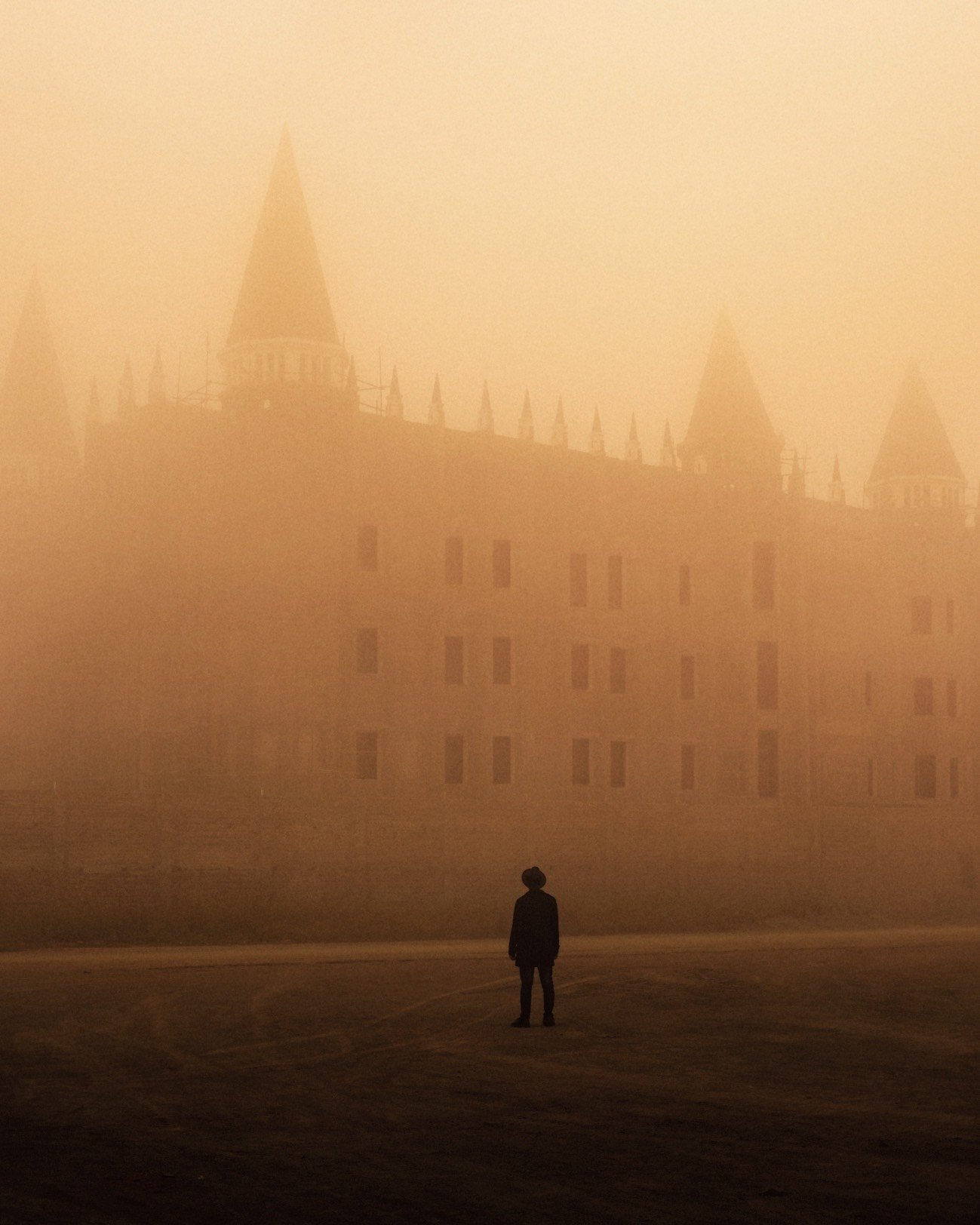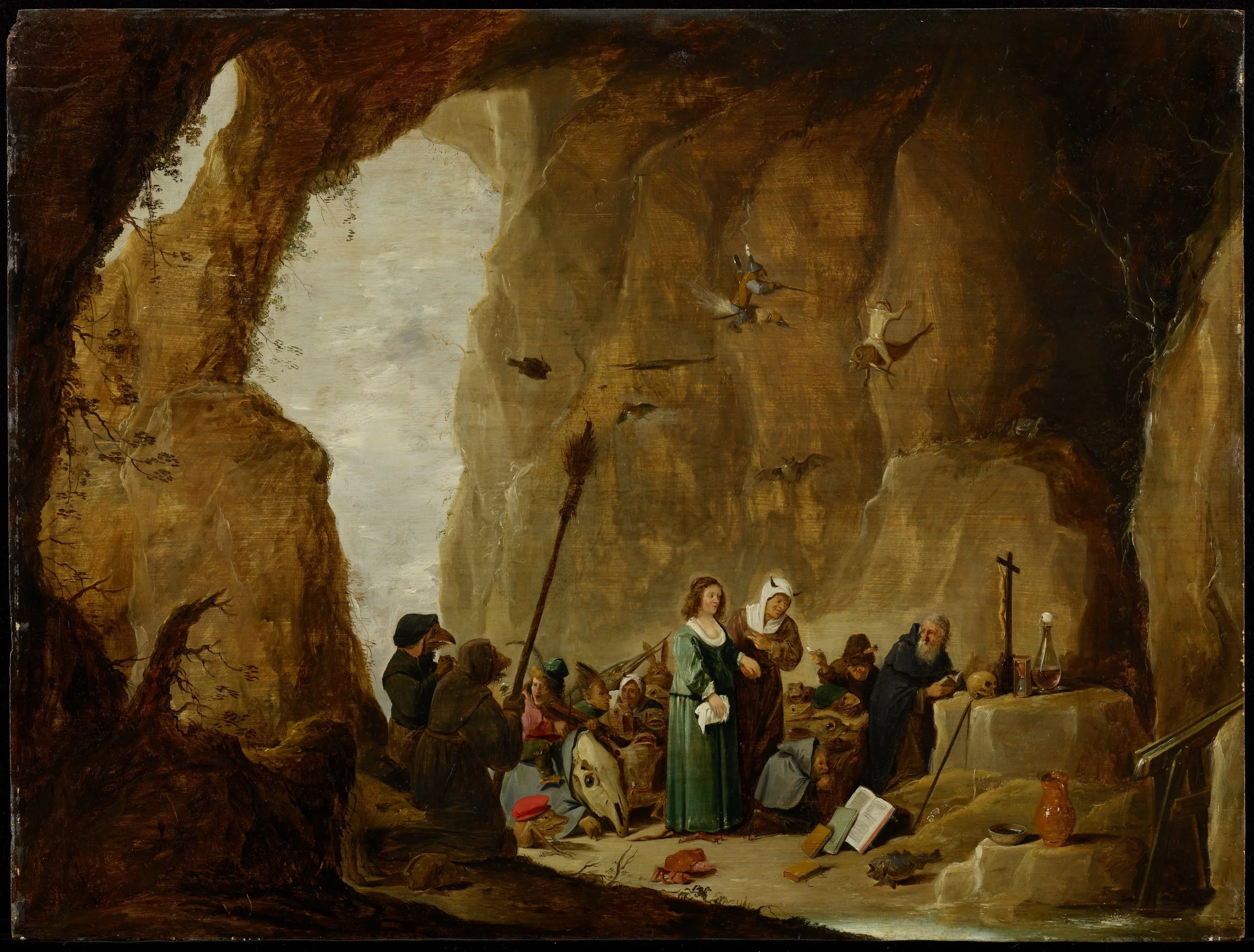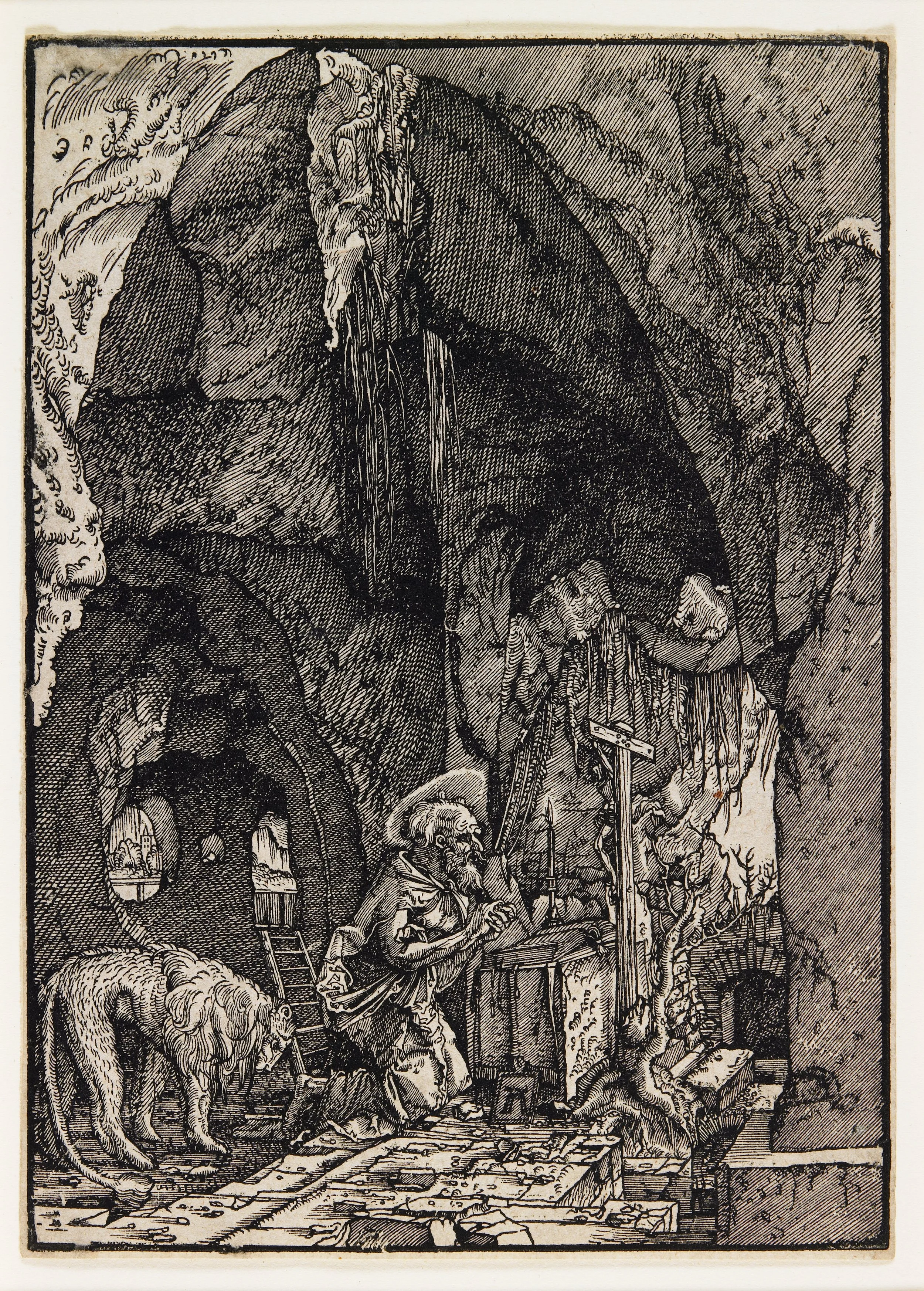The Ascetic Fetish

The Ascetic Fetish
Pieter Valk
On Misunderstanding the Christian Vocation of Celibacy
Christian celibacy is a tragically misunderstood concept. Depictions of kingdom singleness, from Renaissance paintings to modern television shows, often misrepresent Christ's invitation and early Church practices, tempting some ordinary Christians to ignore their calling and others to indulge in a caricature of the vocation of Jesus. These thoughts swirled through my mind as I took up an invitation to spend a holiday weekend at a friend’s house in the land of 1000 lakes…
No one warned me that Memorial Day in Minnesota is often cold and rainy. As I arrived at the beautiful lake house, I quickly reset my expectations not to include warm, sunny swims. Instead, we passed time exploring Minneapolis. Lured by free admission, we spent an afternoon at the Minneapolis Institute of Art.
I was skeptical. In the past, looking at art with others felt like a bunch of people who know little about art attempting to one-up each other with sophisticated-sounding observations. Instead of enjoying the art, I've found myself stuck in my head, trying to think of something clever and judging myself for not being clever enough. But this time, I was intentional about exploring the art by myself and focusing on something of interest to me.
I scrolled through the list of exhibitions, and a collection of drawings and paintings of cave celibates and dessert monks caught my eye. You see, I'm a monk. Of sorts.
Five years ago I wrapped up an accidental discernment process, ending in confidence that God was calling me to vocational singleness—the lifetime abstinent singleness for the sake of kingdom work with undivided attention commended by Jesus and Paul in Matthew 19 and 1 Corinthians 7.
Despite the clarity, I didn't feel some supernatural provision of intimacy with God—I knew I would need just as much human family as the next person. So I helped start an intentional Christian community for men called to vocational singleness, a place where we could find family, called the Nashville Family of Brothers.
When I turned the corner and began studying the paintings and drawings of fellow monks, I was disappointed. Dark sketches depicted lonely celibates running from persecution and sexual temptation. Paintings of St. Anthony by Teniers and drawings of St. Jerome by Altdorfer and Fragonard showed ascetics contemplating death and martyrdom while fighting off evil spiritual forces. Each artwork was a “Where's Waldo?”
scene of skulls, women, demons, or caves—reminding the monk of the brevity of life, the call to self-denial, and the otherworldliness of his vocation. The collection consistently glamorized and romanticized extreme self-deprivation, detachment from self, and disconnection from everyday Christians.
I was bothered imagining other patrons perusing the artwork and forming their understanding of early Church celibacy (and what faithful Christian celibacy might look like today) based on these sketches and brushstrokes. I feared the collection would paint a picture in observers’ minds of a solitary, holier-than-though person isolated from society and community in an effort to get lost in the spiritual realm.
Fortunately, that art is a lie.
The Temptation of St. Anthony by David Teniers, the Younger
The point of these artworks wasn't to accurately depict early Church celibacy. These paintings weren’t produced by contemporaries of the subjects hoping to recreate faithful visual representations of 4th century desert celibates. Instead, they were commissioned 1000 years later when it was customary to depict religious scenes, even if both the artist and patron were only marginally religious themselves. The goal was to show off the artist’s ability to visualize drama, not to accurately communicate ancient celibacy. Ancient practices of self-denial were intentionally romanticized (if not fetishized) to provide the artist with adequate spectacle to depict.
But if the story these paintings and drawings tell isn't accurate, then what did early Church celibacy look like? Early Church sources about the practice of singleness tell a different story: men and women permanently committed to celibacy, gathered in informal communities inside the city, working normal jobs, going to church with married Christians and their kids, and using their availability to serve their church and city.
*
During the first five centuries of the church, early Christians lived out the singleness Jesus and Paul advocated for in Matthew 19 and 1 Corinthians 7 in diverse ways, but only three features were universally held: prayer, chastity/self-control, and permanent renunciation of marriage. According to "Christian Asceticism between the New Testament and the Beginning of Monasticism" in the American Benedictine Review by Vincent Desprez, primary sources from the first 500 years of the church unanimously understood Jesus and Paul to be inviting Christians to consider a lifetime commitment to singleness for the sake of the kingdom, including St. Clement of Rome (the disciple and successor of Peter the Apostle), St. Ignatius of Antioch (the disciple of John the Apostle), St. Justin Martyr, St. Athenagoras of Athens, Polycrates of Ephesus, Tertullian, St. Cyprian of Carthage, Clement of Alexandria, Origen, and St. Methodius of Olympus. The first generations of Christians discipled by the Apostles, before the Bible was canonized, spoke universally of a permanent singleness in place of marriage. In the words of St. Clement of Alexandria, "[H]e who has confessed his intention of being celibate, let him remain unmarried" (A.D. 195).
How did committed celibates live? Desprez explains that early celibates first tried living with married couples, but they found it isolating. For a time, opposite-sex pairs of vowed celibates committed to non-sexual, non-romantic companionship with each other, but those led to frequent sexual impurity. According to James Goehring’s Ascetics, Society, and the Desert, celibates instead gathered in single-sex communities, first informally as with the house of celibate widows in 1 Timothy 5, and then formally in the thousands and tens of thousands by the fifth century. Contrary to the popular imagination of desert monks, cave celibates, and cloistered ascetics; the most common expression of celibacy in the early Church were remnuoth, or city celibates, who lived in the city among married folk, owned property and participated in the economic life of the city, and served in their local church. The earliest historical record of a monk is actually that of a remnuoth named Isaac in 324 AD in Egypt in a legal document corroborating economic and social participation in the city. According to Greg Peters’ The Story of Monasticism, Palladius of Galatia notes that around 420 AD, 2,000 city celibates lived in Alexandria, 5,000 lived in Mount Nitria, and 7,000 lived in Pachomian communities. Even more, 20,000 celibate women and 10,000 celibate men were reported to have lived in Oxyrhynchus around 400 AD.
During the century before and after the canonization of the New Testament, Christian singles were committed to celibacy (not waiting for marriage), lived in the city with other committed celibates (not alone), worshipped in local churches with married people and their kids (not cloistered), and worked normal jobs while using their availability to serve their community (not just praying).
What if Renaissance artists had instead drawn city celibates? What if the Minneapolis Institute of Art had instead included a collection of paintings telling the true story of the early Church and its vocationally single members?
Saint Jerome in a Cave by Albrecht Altdorfer
I imagine these alternative works, where monks would be seen enjoying human intimacy in family with other celibates instead of struggling alone. Some would show men and women serving their church and community instead of detachment from the world and themselves. Other sketches would depict monks helping parents raise their kids, teaching children, and caring for the sick in the city instead of endlessly praying in cloistered isolation. Perhaps the artwork would show single Christians contemplating the good of the city instead of martyrdom and demons and skulls, confronting the brokenness in society instead of running from persecution and sexual temptations. Observers would conclude that vocational singleness was common and ordinary instead of exceptional and more holy.
And what if that art inspired observers to follow that wisdom today?
Imagine if Christians carefully discerned whether they were called to vocational singleness or Christian marriage. Imagine if discernment led many more to commit to a lifetime of giving up dating, romance, marriage, sex, and biological children to live with other committed celibates, worship in their local churches, and intentionally use their 9-to-5 job to bring healing to their community. Imagine many more Christians addressing wealth inequality, racial division, homelessness, mental illness, and a lack of care for immigrants and refugees with undivided attention made possible by celibacy. Imagine them showing us what it means to enjoy family in the body of Christ and giving all of us hope for how we’ll enjoy family in the New Heavens and New Earth.
In Nashville, we’ve done just that.
*
After college, I was part of four different houses with vague aspirations of intentional Christian community. Unfortunately, each fell apart because guys got married, moved for a job, or ran away from conflict. Then in 2017, I met with the late Father Thomas McKenzie (my former Anglican priest) to share that I felt called to vocational singleness but didn’t feel a magical gift of celibacy such that I didn’t need human family. I asked, “How can I find the family in the body of Christ that I need at our church?” Here’s how he responded:
“To be honest, I don’t think you’re going to find the kind of family you need at our church or any church in Nashville any time soon. But monasticism has been the most common way celibate people have found family. It’s been the greatest source of evangelism in the Church, the greatest source of theology in the Church, and the greatest source of social justice in the Church. I think you should start something in Nashville, build the family you need, and stay connected to our church to teach us how to do family better. Find three other people, commit to doing something together for a year, and see what happens!"
Fast forward to today, the Nashville Family of Brothers is an ecumenically Christian monastery building family in Nashville for men called to vocational singleness. We’re still a part of our local churches. We’ve got jobs outside of the brotherhood leveraged for the sake of the kingdom. We’re still connected to parents and their kids. Plus seven of us pray and eat and worship and vacation and serve and live together in a home as a family while we discern whether to make lifetime commitments to each other.
Imagine how all of this would bring the gospel alive for those curious about Jesus and draw people to Him. Not-yet-believers would witness a meaningful minority of Christians giving up some of our world's most coveted experiences to spend their lives healing the wounds of others. The spiritually curious would inquire further, "But why?" To which vocational singles would respond in word and deed, "We really believe that Jesus is who he says he is and that the fullest life is found laboring shoulder to shoulder next to Him. Would you like to join?"
Pieter Valk
Author & Speaker
Pieter is an Author, Speaker, Church Consultant, Monastery-Builder & Licensed Counselor. Learn more at www.pieterlvalk.com
Photography by Khumais Idrees

